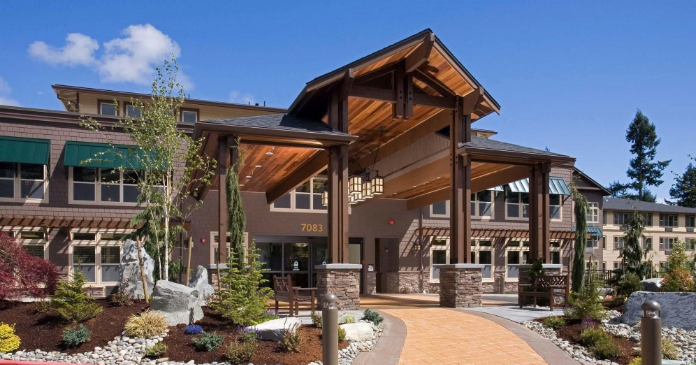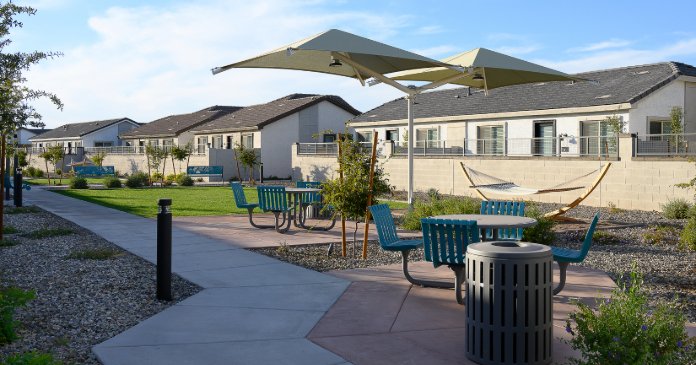The latest reports from industry associations and the annual report on the state of the nation’s housing from the Joint Center for Housing Studies at Harvard University all point to a strengthening apartment market as we head into the third quarter of 2006.
The June “Commercial Real Estate Outlook” from the National Association of Realtors sees healthy demand for space driving commercial real estate markets with solid fundamentals and strong investment activity.
David Lereah, NAR’s chief economist, said fundamentals are improving with tightening vacancies. “Rent growth in commercial space is gaining traction, although there is some softness in part of the retail sector,” he said. “Commercial real estate remains a bright spot in the economy, but there are concerns over energy costs, rising interest rates and slower-than-expected job growth which could dampen future demand.”
Lereah said investment considerations remain positive. “With tightening vacancies and a slowdown in speculative construction, the office market will offer respectable returns for investors,” he said. “Demand for rental apartments and hotel rooms is on the rise.”
The NAR forecast
The NAR forecast for five major commercial sectors includes analysis of quarterly data for various tracked metro areas. The sectors include the office, industrial, retail, multifamily and hospitality markets. Metro data were provided by Torto Wheaton Research and Real Capital Analytics.
The apartment rental market—multifamily housing—is expecting vacancy rates in the fourth quarter to average 5.7 percent compared with 6.2 percent during the same period in 2005. Average rent is forecast to rise 4.1 percent this year compared with 2.9 percent in 2005.
Conversion of apartments into condos is waning, but a slight softening in the housing market is boosting rental demand. Concerns about sustainable job growth and job security are playing a role by keeping some people in the rental marketplace.
Total investment in multifamily property was $24.0 billion during the first quarter, up 30 percent from the first quarter of 2005; seven out of ten transactions were garden-style apartment complexes. Condo converters accounted for less than 15 percent of transactions, taking a little over 30,000 units from the rental market.
The top markets for apartment investment over the last year were Manhattan, Phoenix, Los Angeles, Tampa, Orlando and Atlanta. The areas with the lowest apartment vacancies currently include Fort Lauderdale, Northern New Jersey, Washington, West Palm Beach, Miami and Tampa, all with vacancy rates of 2.5 percent or less. Multifamily net absorption is likely to be 256,500 units in 59 tracked metro areas this year, compared with 351,000 in 2005.
Harvard study shows rental market revival
In its annual State of the Nation Housing Report, the Joint Center for Housing Studies at Harvard found that rental demand was revived in all four regions of the country in 2005. For the first time in years, says the report, the number of renter households rose and the national rental vacancy rate fell. Demand was sparked by an uptick in job growth at the same time that a falloff in apartment production and increased condo conversion activity kept supply at bay, bringing greater balance to the markets. As house prices rose and stayed high, renting was viewed as a bargain in many regions.
The Midwest led the nation in growth of rental households and both there, and in the South, rental growth outpaced homeowners and forced the home ownership rate down. The Northeast and West saw home ownership surge ahead of solid rental growth.
Key demographic data emerged from the study: Rental demand among middle-aged adults outpaced younger households. The highest rate of renter growth was among African American households, a group affected strongly by swings in economic cycles.
A key to the rental recovery was a marked reduction in supply aided by a falloff in multifamily construction from 275,000 units in 2002 to 203,000 units in 2005 coupled with the increase in condo conversions.
According to Real Capital Analytics, condo conversion took 63,000 units off the market in 2004 and 195,000 units in 2005. Together, the reduced supply brought about the first reduction in the national rental vacancy rate in four years, dropping from 10.2 percent in 2004 to 9.6 percent in 2005.
Vacancy rates came down in 47 of the 52 metropolitan markets surveyed annually by M/PF Yieldstar, compared with 38 metro areas the previous year and only 25 markets two years prior. Some 41 of the surveyed metro markets cited effective rent increases. Surprisingly, a number of the markets showing the greatest rent growth were the ones performing the most poorly in recent years, such as Austin, Boston, Phoenix and the San Francisco Bay area.
Investor demand for multifamily properties has stayed strong, says the Harvard report. In the last four years, institutional investors bid up prices on apartment properties while overlooking weakness in rent revenues. Investors appear to be counting on appreciation and lower interest rates to push their leveraged investments ahead of the stock and bond markets. Strong investor demand coupled with normalizing operating revenues and ongoing condo activity has boosted apartment building values to 13.5 percent in 2005 for the first double-digit increase since 1984.
Given that key factors in job and household growth remain healthy, the number of rental households is expected to grow by at least 1.8 million by 2015. The entire gain is likely to come from minority renters. This projection points to key observations in the report of the shift in renter demand and demographics.
Rapid growth of Hispanic, Asian and immigrant populations has boosted minority share of rental households from 31 percent in 1990 to 43 percent in 2004. While the overall shift in renter demographics tends to move slowly, it is worth noting the changing trends.
One sour note in the report is the continued loss of affordable rental housing over the past 30 years. In the ten years from 1993 to 2003, the number of affordable housing units dropped by 1.2 million. The units renting at $400 or less to low-income renters was reduced to 5.4 million. The long-range picture looks even worse with major segments of the remaining affordable housing stock financially unstable and operating at a loss. With high levels of demand showing no sign of abating, and federal and state subsidy and tax programs unable to restrain the loss, the future of affordable rental housing looks dim.
NMHC survey sees continued growth
Apartment markets continued their upward trajectory, according to the National Multi Housing Council’s July 2006 Quarterly Survey of Apartment Market Conditions. Some 75 percent of the respondents reported tighter market conditions over the prior three months, measured by lower vacancy rates, higher rents or both.
“Improving rental demand in the face of rising interest rates and declining sales volume attests to the strong outlook for the apartment sector,” noted Doug Bibby, NMHC’s President.
According to the report, the number of renter households rose in 2005 for the first time in years. It goes on to say that as echo boomers, same-age immigrants and second-generation Americans move into adulthood, demographic forces will favor rental housing over for-sale housing.
The survey’s Market Tightness Index increased slightly this quarter (May to July), to 85, now the second highest index number on record. (An index reading above 50 indicates that, on balance, conditions are improving; a reading below 50 indicates that conditions are worsening; and a reading of 50 indicates that conditions are unchanged.) The Market Tightness Index has been 80 or above for five consecutive quarters, and above 50 for 12 consecutive quarters, signaling a significant improvement in demand for rental housing. In contrast, the Index was 45 in July 2003 and 39 in July 2002, during the peak of the recession.
Despite improving market conditions, sales activity continues to slow from the record-level of transactions conducted in 2005. A mere six percent of all respondents reported higher sales volume this quarter than last and 42 percent reported lower sales. The Sales Volume Index declined slightly from 35 to 32, the lowest since January 2002, and down from a high of 66 in July 2005.
The Equity Financing Index remained at 50, indicating that equal shares of respondents (in this case, 11 percent) gauged equity financing was either less or more available. But nearly three-quarters of respondents thought the availability of equity financing had not changed from the previous quarter.
Finally, despite steadily rising interest rates, the Debt Financing Index actually increased from 21 to 29 this quarter. The number of respondents saying that now is a poor time to borrow dropped from 69 percent last quarter to 16 percent this quarter. The vast majority, 71 percent, report that conditions are unchanged. This suggests that even though conditions for borrowing are not ideal, they are not getting worse.
The July 2006 quarterly survey was conducted July 24-31, 2006. Sixty-five CEOs and other senior executives of apartment-related firms nationwide who serve on NMHC’s Board of Directors or Advisory Committee responded. The April 2006 quarterly survey was conducted April 24-May 1, 2006; 75 responded. The July 2005 quarterly survey was conducted July 18-25, 2005; 88 responded. Full survey results are posted www.nmhc.org















